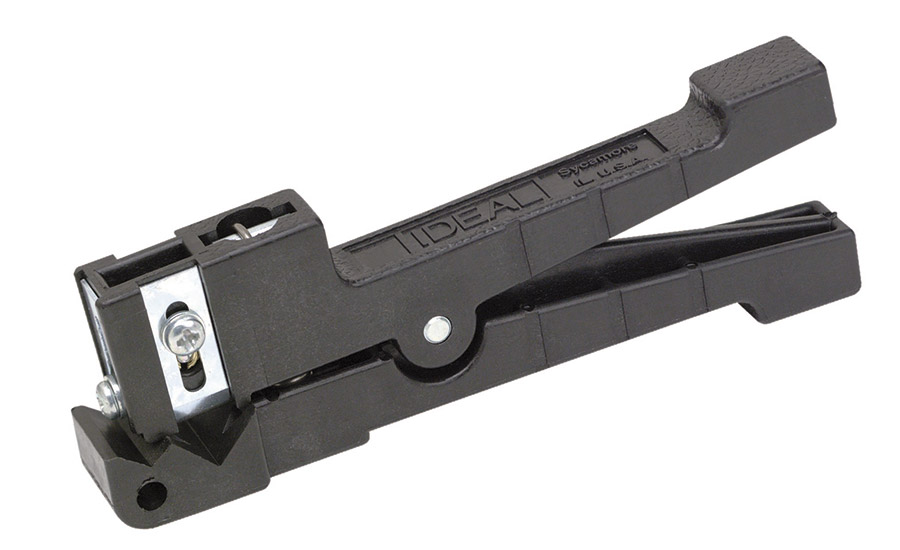My grandmother Lillian was full of little life-lesson witticisms. One of her favorites was, “If wishes were horses, beggars would ride.” It takes a second to get it but the message is simple; wishes are just that. Reality is usually something else.
As much as I depend on technology for my livelihood and lifestyle, I secretly wish that products and services would stop changing, if only for a little while so I can catch up. Whether it is hardware, software, Internet access or cellular communications, it seems something is always begging and screaming to be upgraded/junked/replaced so life as I know it can continue.
I have three homes that matter to me. There’s the world headquarters of Slayton Solutions Ltd. in the increasingly trendy Wicker Park neighborhood of Chicago, the undisclosed vacation location in Michigan’s great southwest, and my mother’s house in the Chicago suburbs, or as we city folk call it, the “land beyond O’Hare.” I depend on electronic security systems to protect these domiciles as well as to monitor various critical functions such as Mom’s medical alert pendant and smoke/heat detection. I need these systems to work 24/7/365. With all the traveling I do spreading the gospel of IP glory to the electronic security industry, I don’t want to worry about the functionality of my security systems.
I always thought that as I got older life would become more simplified. Unfortunately, that’s not the case in 2016, particularly when it comes to technology shifts that affect our industry.
For the past three years I have had a functional 2G alarm transmitter in my vacation cabin. Until the day I didn’t.
My stomach churned. Here’s a security system that has lost central station connectivity, and because the house is way out in the country, my little local siren isn’t going to do diddly if there is an event or intrusion.
What to do? I needed a new system with an upgraded 3G alarm transmitter, a company to install it and a central station to handle the signals. I spend most of my brainpower on IP cameras and related devices, and I honestly don’t keep up with the nuances of residential and commercial alarm systems. Fortunately I have friends in our business that could steer me in the right direction.
For the security system I chose the Honeywell Security Lynx Touch 7000. This product fit my needs perfectly; the previous system was a self-contained control panel/transmitter/console with wireless sensors, so the installation of the new system and components was basically a direct replacement for the failed security system.
The next step was to select an installation and central station security company because, frankly, I have retired from active alarm installation work after 39 years in our business. Just as I no longer attempt roofing repairs by climbing a ladder, I would rather engage a professional electronic security company to provide the installation than end up confused and calling tech support to hash out any issues with a new security system.
Enter Engineered Protection Systems of Grand Rapids, Mich. EPS Security is the largest installation company in southwest Michigan, has its own UL central station, is family owned, and has a great reputation for quality service. Not only do they have a branch office in Kalamazoo near my Michigan location, they also have cool trucks.
Another important factor is that they are very proficient with the installation of Honeywell Lynx Touch systems. So I called them and scheduled the installation.
Because the house is often unoccupied, I planned for the installation of multiple motion detectors to cover the common areas of the home. This provides intrusion detection without having to put contacts and transmitters on every door and window.
The actual installation took only about two hours. While my EPS technician was commissioning the system, I marveled at the Honeywell Compass software that he was using on his tablet computer. This program allowed the tech to completely program all facets of the security system, including the enrollment of the local sensors and central station connection information. The programming comes to the panel via the cellular alarm transceiver, which verifies that there is reliable cellular connectivity. Our industry has come a long way from “burning” plug-in chips or cumbersome keypad programming of systems, and that’s a great thing for us.
What do I like about the Lynx Touch 7000 system? First, the panel not only displays current conditions on its bright and colorful screen, the panel also “talks” to the user, announcing any system arming/disarming conditions and other events. This sounder is loud enough to be heard through two doors, so I can hear it from within the garage and can know for certain that the panel is armed/disarmed. Also, the alarm transmitter has been programmed for daily “check in” messaging so that the central station can verify that the system and its cellular transmitter are operational. The remote key fobs are very small, which is helpful for a guy like me who has exactly 26 keys on his key ring, some of which I actually know where to use.
This system also can be set up with Honeywell Security’s Total Connect service, which broadcasts all system statuses, commands and IP video onto the end user’s smartphone or PC. I use Total Connect for my home in Chicago and love that I can check on what’s happening at my house when traveling.
So I got a new system, met some new people in our business, and sleep better knowing my Michigan house is protected and monitored for intrusion and smoke/heat detection. And my life has been simplified — at least until the next tectonic shift comes to our business.
Author’s Note:Thanks to Dean Mason and Ralph Maniscalco of Honeywell Security and the following EPS personnel: Kacey Jones, Chris Killmer, Jeremy Schellie and David Hood.
CORRECTION
In the article, “Wearing the Uniform,” (December 2015, p. 136) SDM published an image that was not intended by the author to illustrate the story. The correct
image is pictured here. SDM regrets the error.
PHOTO COURTESY OF IDEAL INDUSTRIES

MORE ONLINE
Do you like reading Dave’s column? You can read each one online and access the archives for more by Dave by visiting www.SDMmag.com/taxonomies/2253-security-networkings.






